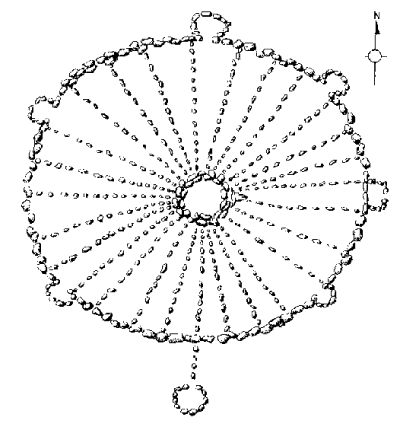 |
Science Frontiers ONLINE No. 35: Sep-Oct 1984 |
|
|
A Different Way Of Looking At The Universe
Here is an excellent survey of American archeoastronomy from Canadian medicine wheels to Mesoamerican aligned structures. To the anomalist, the most interesting part of Aveni's review paper is found in his comments about the world view of the Precolumbian Americans, particularly the Maya. That the Maya were acute astronomers is beyond question. They had even developed a correction scheme to keep Venus' 584-day canonical cycle on track with its true synodic period of 583.92 days. Their predictions of the position of Venus were accurate to 2 hours in 481 years! Not bad for a civilization that did not seem to have any conception that the planets revolved around the sun. The Maya, in fact, did not seem to care what made heavenly bodies move; they only wished to predict their appearance accurately. Instead of developing celestial mechanics based on gravitation and laws of motion, as we have done, they were content with numerical algorithms; that is, ways of computing a desired result. Their astonishingly accurate predictions of Venus, solar eclipses, and other astronomical phenomena evolved from cycles of numbers advancing each day like interlocking gear teeth. These algorithms gave them no insight into cause and effect, but they got the right answers. They needed no physical laws, just patterns of numbers. It was a different way of comprehending and dealing with the universe.
(Aveni, Anthony F.; "Native American Astronomy," Physics Today, 37:24, June 1984.)
Reference. For much more on archeoastronomy, consult our Handbook Ancient Man. Details here.
 | An early drawing of the Big Horn medicine wheel in Colorado. It is actually not quite this regular. |